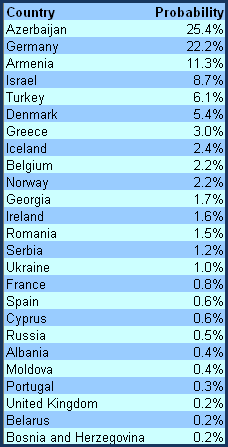Galloping from the centre. Drifting from the centre of public opinion on issues is dangerous enough for a politician. Galloping towards an extreme position is a sign of desperation and normally a recipe for failure. Thus I conclude that Tony Abbott, in reviving the daring tactic of his Liberal predecessor John Howard in making a tough approach to boat people an issue, has decided that he is in rather desperate political trouble.
Despite what the recent opinion polls have been showing about the Coalition versus Labor contest getting closer, my guess is that the Liberal Party’s own research is suggesting that the Opposition Leader himself is not impressing the voters. As he could not plausibly move towards more moderate positions the only way to go is towards the extreme. But there is a big difference between the Australia of now and the electorate that Howard managed to appeal to.
Prime Minister Howard used boat people as a way of getting back the red neck vote that Pauline Hanson had lured away. Abbott’s Liberal Party does not have to worry about that. What it does have to be concerned about is that the more moderate elements of the supposedly broad political church are no longer inclined to be silent as they were when Howard dominated his party.
Even before his departure they had found the courage to make their displeasure public on issues like immigration. They will now do so even more vigorously.
The Crikey Indicator keeps moving to Labor. Only a small movement towards Labor in the Crikey Federal Election Indicator this week but a movement nevertheless with the probability of the Government being returned now at 71%

No such good news for Labor in New South Wales and Victoria where elections are also due this year. In both states the Coalition has improved its probability rating.
And now for the real election. We do have this weekend a widely anticipated election when the television viewers of Europe will vote in a winner of the Eurovision song contest. The Crikey Indicator has gone to work to produce this listing of the probabilities:

And the likely winner is? Azerbaijan, whose entry “is the talented Safura who will perform the Swedish-written Drip Drop“. You can hear it for yourself here
Bringing back a Hapsburg connection. If noble predicates were not banned by law in the Czech Republic, Karl Johannes Nepomuk Josef Norbert Friedrich Antonius Wratislaw Mena von Schwarzenberg would be known as His Serene Highness The Prince of Schwarzenberg, Count of Sulz, Princely Landgrave in Klettgau, and Duke of Krumlov.
As there is a ban they simply know him in Prague as Karel Schwarzenberg, a former Czech Foreign Minister and current leader of the Tradition Responsibility Prosperity 09 (TOP 09). And after a national election being held today and tomorrow this Prince may well emerge as the “king maker.”
To an outsider like me the politics of the Czech Republic seem as complicated as the TOP 09 leader’s name but a few themes about this ballot are clear. The Republic has a recent history of financial scandals involving government ministers and Karel Schwrzenberg has pledged to battle rampant corruption with his newly formed party. The message of this nobleman with the Hapsburg connection is, reports Der Spiegel, that “I am just as disgusted with the politicians as you are — and that is why you can trust me.”
The latest opinion poll I can find — that published by the Angus Reid Global Monitor — suggests that there certainly are many who do trust him.

Support of over 9% is a good start for a fledgling party and well above the 5% minimum needed to gain seats in the 200 member lower house under its D’Hondt system of proportional representation.








Does anyone else think that the Azerbaijani Eurovision song contestant is a spitting image of Kylie Mole from the Comedy Company?
Can you explain why the Crikey federal election indicator gives Labor a 71% probability of being returned while the opinion polls have the 2 party preferred vote at 50:50? This has puzzled me for the last 3 months since Labor’s lead in the opinion polls fell so sharply. Is it that the public tell pollsters their thinking on current issues which they are expected to revise when reviewing the parties’ whole programs, performance and people in deciding how to vote in an election?
Gavin
A pollster is measuring how people would vote now. The market is evaluating what is likely to happen not today but on election day.
Not that they are measuring the same thing.
The pollster gives a percentage vote for each party.
The market gives a percentage chance of each party winning.
In the example you quote the pollster is saying that the vote will be 50:50. Assume that the electoral system is exactly fair we would say that the chance of each party winning is also 50:50.
But at the moment, as you point out, the market says it is 70% Labor to 30% Coalition. From this we can deduce that the people investing money on the result think that, whatever the opinion polls show now, there is a 70% probability that Labor will get the 50.1% or more that will give them victory. We can use a rough statistical measure to convert a 70% probability into an equivalent vote figure.
I say rough because it depends on what we assume the standard deviation in our figure to be. but a 70% probability means that the market think the final vote for Labor will be 51 plus a little bit rather than 50.
I hope that helps but I acknowledge that it is Friday night football night which is a two bottle affair!
Thanx Richard